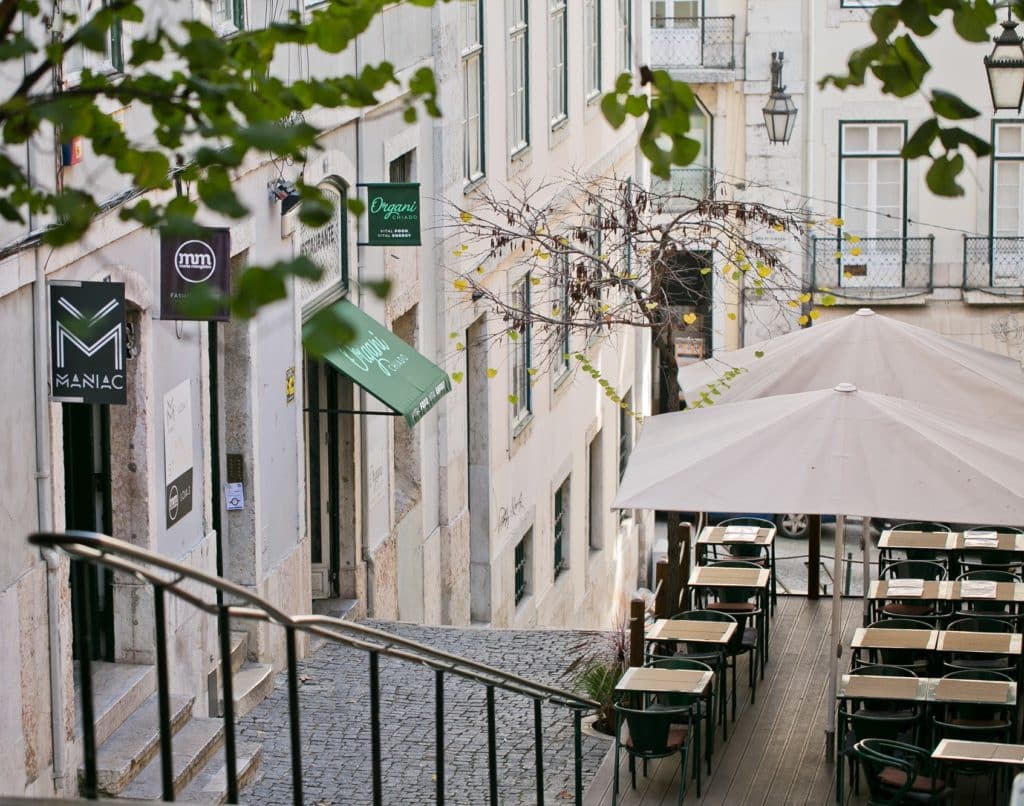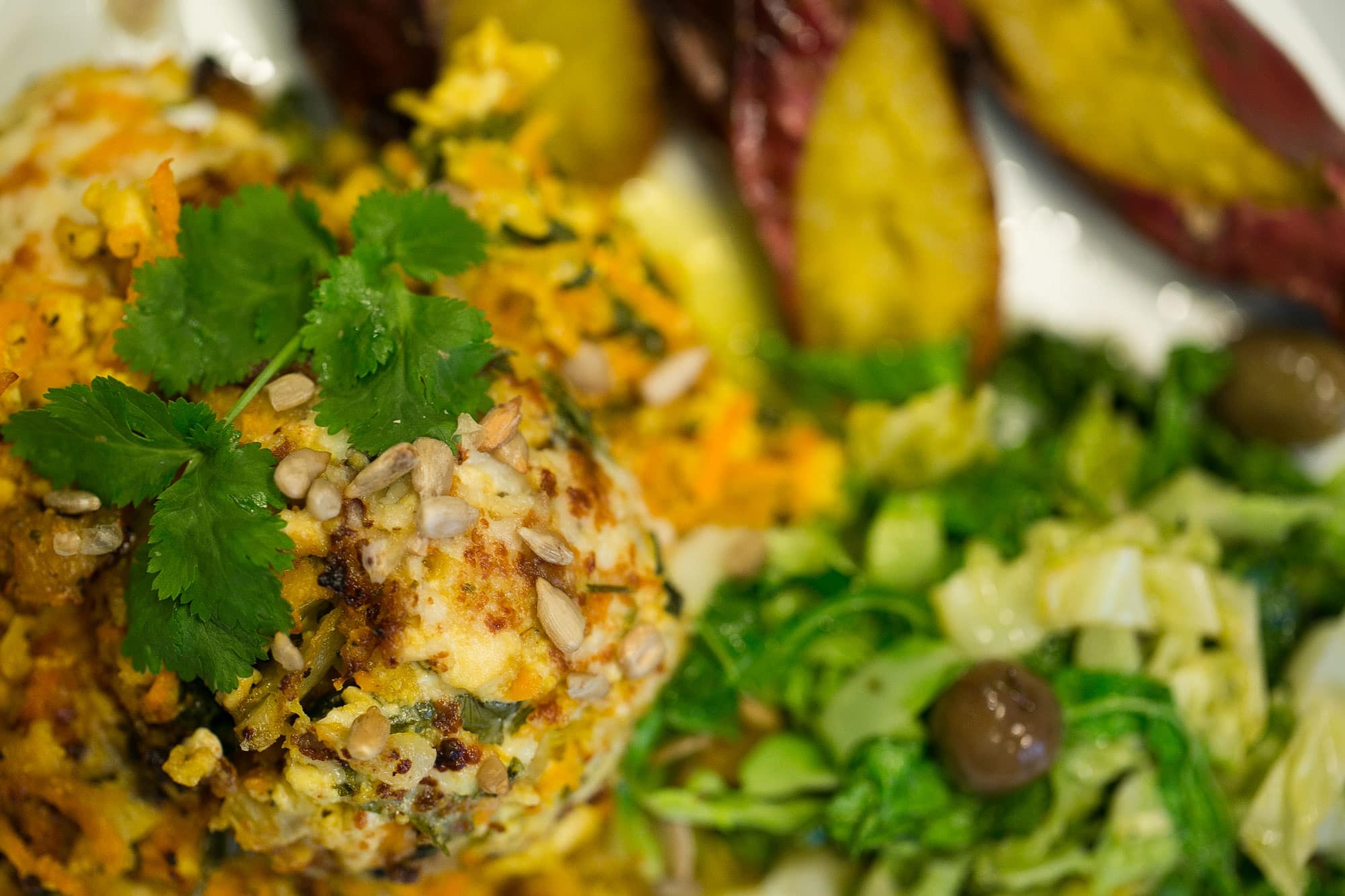- What does it mean to be “vegan”?
To be vegan is not to consume or use any product that has animal or animal ingredients. - What is the difference between vegan and vegetarian?
The vegetarian does not consume animals, but consumes products of animal origin, such as milk or dairy products (cheese, yogurt, etc.) - Is being vegan necessarily healthy?
No, we can eat without any animal products and not be healthy, such as drinking soft drinks and products with a lot of sugar. In our restaurant we try to unite the vegan to the healthy, and for that, we cook with natural methods with fresh and natural ingredients. We also don’t use sugar in any product, from drinks to desserts. - What is considered free from suffering and pain, plants do not suffer?
To realize when there is pain and suffering, we have to know the origin of this sensation, which is transmitted by the central nervous system. It is a common and consensual limit point of the scientific community on how this sensation is transmitted. Plants have no central nervous system, so they do not experience any pain or suffering. - Why don’t you have Acai, papaya or other tropical fruits in your restaurant?
In our restaurant we work with local and seasonal products, thus contributing to a better ecological footprint (the resources spent on transportation) and we believe that these products are more suitable for our well-being and health, due to being in the same environment and local that we are. - Why is being vegan or vegetarian healthier?
We believe that not consuming animal products contributes to our good health in the short and long term. Due to our physiology and our “energy”. For physiological reasons, our body, like that of all animals, has evolved over thousands of years, trying to take into account our habits. From the point of view of food, our physiology indicates that we evolve by eating mostly cereals, plants and fruits. Examples: Our dentition has 20 molar teeth (used to grind cereals), out of a total of 32, and our canine teeth (used to tear) have a very rounded shape, when compared to the real carnivorous animals, which have very pointed canine teeth and a very small number of molars. The acidity of our bile in the stomach is more suitable for digesting plant products, unlike that of carnivorous animals that have extremely acidic properties, necessary for the digestion of meat. The length of our intestines is very long (several times the height of the body), serving to slowly absorb nutrients from cereals and plants, compared to that of carnivorous animals, which is much shorter, due to the need for faster digestion of meat to prevent the release of toxins resulting from the decomposition of meat. In terms of good “energy”, and as intelligent beings that we consider ourselves in relation to other animals, it is also logical to eat something that does not escape us, something that does not suffer for our pleasure. Why not feed ourselves with what nature has made available to us? From the point of view of basic instinct, there is a funny example: if we give an apple and a bunny to a human baby, he will instinctively play with the bunny and eat the apple. On the other hand, if you are a baby lion, for example, you may want to play with the apple and try to eat the rabbit. With this evidences, we are able to understand that we were not designed for meat consumption, a habit that in fact appeared about 50/70 years ago, very little time when compared to the time of evolution of Man. The best way to confirm this evidence, rather than to believe theories, is to experiment for ourselves and to perceive the differences on a physical and mental level. - Your desserts are sweet, how is it possible if you don’t use sugar?
We use natural jellies, such as corn or rice jelly, which has a pleasant sweetening power and are healthier, as they are 100% natural and have a lower glycemic index than refined sugar. - If they don’t use eggs, what do you use to add texture to the desserts?
We use a seaweed, agar-agar, which has a natural gelling power, which used in certain amounts can give a texture similar to that of an egg. - What is “veganizing” traditional dishes?
‘Veganizing” is adapting some traditional dishes, but with the vegan and healthy concept that we have. In our restaurant we have, for example, the spiritual Tofu, from the traditional spiritual codfish. We also have the “Feijoada Portuguesa”, a Bean Stew, a dish that delights even for meat lovers. In terms of desserts, all are “veganizations”, because we don’t use milk, eggs or sugar, but they have all the flavor. Rice pudding, traditional American, Pecan Pie, among others… - Do you have alcoholic drinks in your restaurant?
Yes, we have all kinds of alcoholic drinks in our restaurant, from beers, ciders, wines and spirits, all respecting the concept. Portuguese, local and sugar free. - How does being vegan improve the ecological footprint?
In 2019, Planet Earth consumed all the year’s natural resources on July 29, the earliest date ever. What does this mean? That the ability of our planet to regenerate its resources is unable to keep up with human demand. The first step in trying to counter this trend is to understand the impact of our choices on the world, our Ecological Footprint. For this reason, it is crucial to understand how our consumption habits impact the environment. From food to the type of transport used, everything can be improved. To understand this reality, we can use the Ecological Footprint, the metric used to measure the relationship between the resources produced by nature and human consumption. This internationally recognized methodology was developed by the Global Footprint Network. In our restaurant we try to contribute to reducing the ecological footprint by being vegan and using local and seasonal products.



